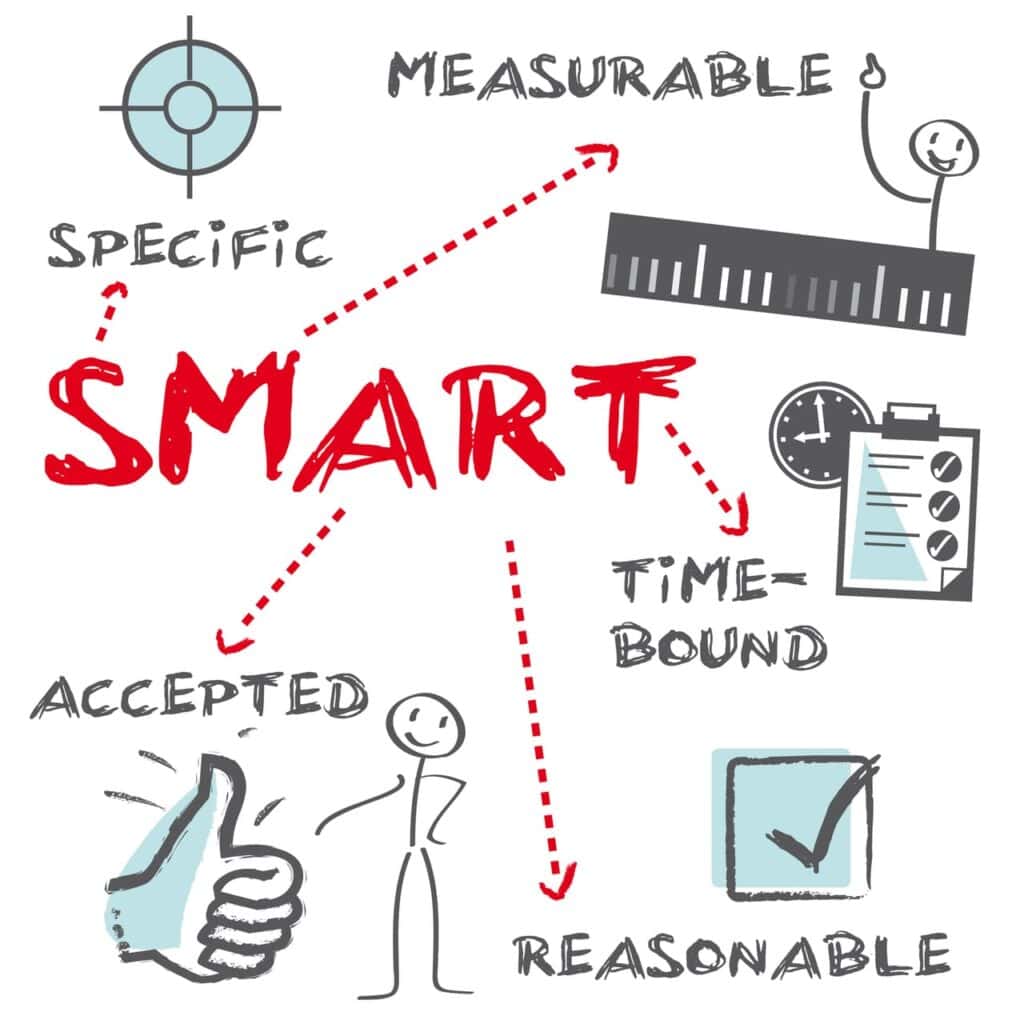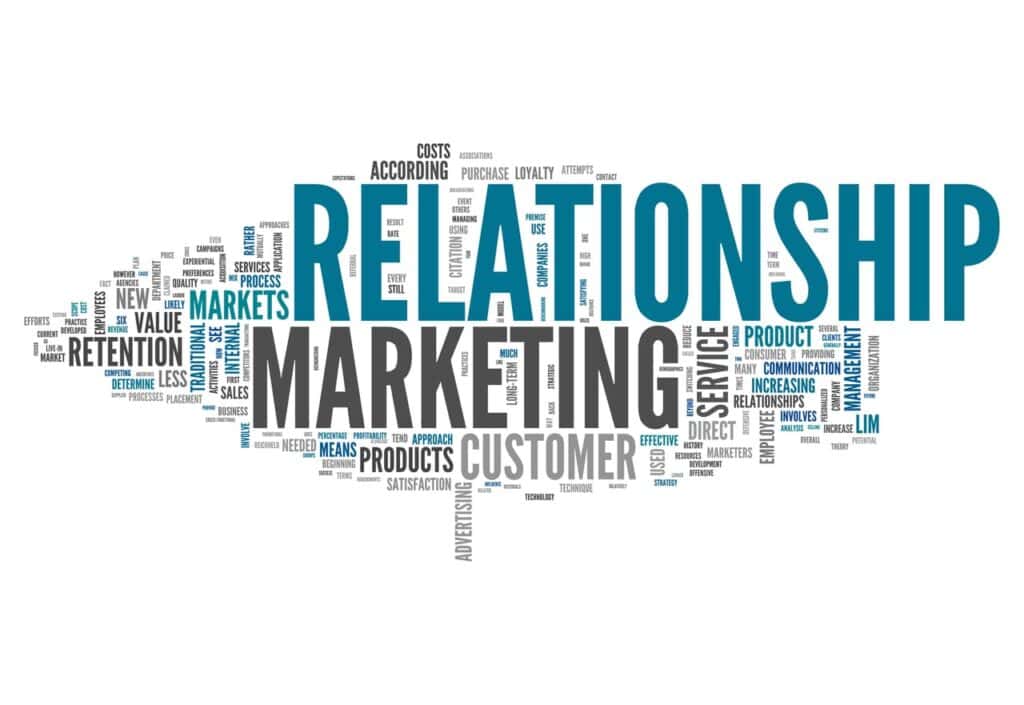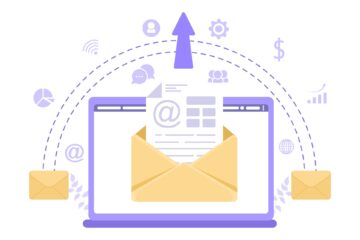In the dynamic world of field sales, triumph goes beyond a pitch; it involves precise, passionate, and purposeful strategies. At the intersection of ambition and accomplishment, SMART goal setting emerges as our guiding light.
This method, focusing on Specific, Measurable, Achievable, Relevant, and Time-bound goals, unlocks unparalleled success in sales prospecting. It bridges the gap between our current state and aspirations.
As we explore effective field sales prospecting in this blog, let’s embrace the transformative power of SMART goals. They’re not just guidelines; they’re our success blueprint.
The Dynamic Transformation of Field Sales Prospecting
Gone are the days when field sales were synonymous with knocking on doors, briefcase in tow, hoping for a chance to pitch. Those were simpler times.
Now, in this age of rapid technological advancement, being field sales reps is not just about having a magnetic personality. It’s about being strategic, informed, and agile.
To truly thrive and be a step ahead in this dynamic environment, it’s crucial to set not just any goals, but SMART ones – Specific, Measurable, Achievable, Relevant, and Time-bound. They are the compass that guides you through the maze of modern sales.
So why the shift? Let’s delve deeper.
A. Historical Context
The traditional cold calls, made without any prior knowledge of the potential client, are a thing of the past.
Now, sales teams are armed with a treasure trove of tools. From CRM systems like Salesforce to AI-powered analytics platforms like Einstein Analytics, the modern sales rep is more informed and prepared than ever.
B. Modern Challenges
In our modern era, information is everywhere. However, the true test lies in separating what matters. How can you ensure you’re reaching the right customer, conveying the right message, and doing so exactly when it matters?
John, one of the experienced sales reps on our sales team, once shared his frustration with outdated methods, sensing that he was just guessing blindly. His breakthrough came when he adopted a focused, data-driven approach – that’s when real results started to show.
C. Role of Technology
While we might not have a magical crystal ball to predict our next big sale, technology is bridging that gap.
Innovations in tools like Beest.app, HubSpot, and Marketo are changing the game, making lead tracking and nurturing more efficient and effective than ever.
D. Adapting to Consumer Behavior
The modern consumer is well-informed, discerning, and expects personalized interactions.
Sales teams now need to be adept at understanding consumer behavior, preferences, and pain points to tailor their pitches effectively.
E. Globalization and Market Expansion
With businesses expanding their reach globally, sales reps must be culturally aware and adaptable.
They need to understand different market dynamics and customer preferences across regions.
F. Continuous Learning and Upgradation
The sales landscape is continuously evolving – it’s more exciting and challenging than ever
To stay relevant, sales reps must be committed to lifelong learning, regularly updating their skills, and staying abreast of the latest tools and techniques. Embrace the change, set those SMART goals, and watch as you soar to new heights in your sales career.
Deep Dive into SMART Goal Setting
Think of SMART goals as your GPS in the world of field sales. They lead you, help you stay on track, and most importantly, bring you to your objective.
So, what exactly are SMART goals? And why are they the talk of the town in the field sales community?
1. Specific
When we talk about setting “Specific” goals, we’re emphasizing the importance of clarity and precision in our objectives. A clear goal removes vagueness, providing a definite path and direction for your desired achievements.
Think about the contrast between these two statements: “I want to increase sales” and “I plan to improve sales of Product X by 15% in the Northeast region by the end of Q2.” The second statement not only specifies the product and target growth but also sets a clear deadline.
This level of detail provides a roadmap, guiding you on what needs to be accomplished and by when.
Setting specific goals in field sales prospecting can be a game-changer. When you have a clear goal in mind, you can shape your strategies, allocate resources, and focus your efforts directly toward that target. This eliminates uncertainty, making sure each action you take is in line with your ultimate aim.
Furthermore, having this clarity lets you effortlessly monitor your progress, make needed changes as you go, and rejoice in your achievements. This keeps you motivated and on the correct route to success.
2. Measurable
When we talk about making goals “measurable,” we mean creating targets you can track and measure as you work toward achieving them. This involves setting clear milestones that help you assess your performance and understand your progress towards your goal.
Imagine setting a goal to achieve a 10% surge in sales. Instead of leaving it as a broad aim, you break it down into monthly benchmarks, like aiming for a 2.5% increase every month over four months.
This approach not only gives you a clear trajectory but also provides smaller, attainable targets to hit, making the overall goal more manageable.
In the realm of field sales prospecting, measurable goals are invaluable. They offer a clear roadmap, allowing sales reps to focus their efforts efficiently and gauge their effectiveness in real time.
By having quantifiable benchmarks, you can swiftly identify areas that need improvement, recalibrate strategies, and ensure that you’re always moving in the right direction.
Furthermore, achieving these smaller milestones boosts morale and motivation, propelling you forward with renewed vigor towards your overarching objective.
3. Achievable
The term “Achievable” in goal-setting underscores the importance of realism and feasibility. While it’s commendable to aim high, it’s equally crucial to set objectives that, with effort and strategy, can genuinely be attained within the given constraints and resources.
Imagine you’re eager to boost your sales. While the thought of tripling sales in a week is exciting, a more attainable aim could be raising sales by 20% over a month. This goal still pushes you to excel but is grounded in reality, making it a challenge that’s both motivating and attainable.
In field sales prospecting, setting achievable goals is a cornerstone of success. Such goals ensure that you maintain a balance between ambition and realism, preventing burnout and disillusionment. When you set targets that are within reach, you’re more likely to stay committed, put in the necessary effort, and celebrate those wins, no matter how small.
Over time, these consistent achievements not only boost your confidence but also build a strong foundation for bigger, bolder goals in the future.
4. Relevant
“Relevant” in goal-setting emphasizes the alignment of individual objectives with broader organizational goals or personal aspirations. It’s about ensuring that the targets you set not only benefit you but also contribute meaningfully to the overarching mission or vision.
Imagine your company is on a mission to bolster its digital presence. Instead of solely focusing on traditional sales avenues, a relevant goal would be to enhance online sales by 25% over the next quarter. This approach ensures that your individual efforts are in sync with the company’s strategic direction, maximizing collective impact.
In the world of field sales prospecting, setting relevant goals is a catalyst for collective success.
By aligning your objectives with the company’s broader vision, you ensure that every effort you make is a step towards overall growth and progress. This alignment not only streamlines your strategies but also fosters a sense of unity and purpose within the sales team.
Moreover, when individual and organizational goals resonate, it creates a harmonious environment where everyone is motivated to pull in the same direction, amplifying results and fostering a culture of shared achievement.
5. Time-bound
The term “Time-bound” in goal-setting highlights the importance of setting a definitive timeframe for your objectives. It’s the belief that every goal, to be effective and actionable, needs a deadline to instill urgency and focus.
Consider the ambition to increase sales for a particular product. Instead of leaving it open-ended, setting a goal like “Boost sales by 30% over the next three months” gives it structure and urgency. This clear deadline acts as a beacon, guiding your efforts and ensuring you remain on track.
In the dynamic world of field sales prospecting, time-bound goals are pivotal. They create a sense of urgency, ensuring that you prioritize tasks, allocate resources effectively, and maintain momentum. With a clear deadline in sight, you’re more likely to take consistent action, evaluate progress regularly, and make necessary adjustments to stay on course.
Moreover, time-bound goals provide a clear finish line, allowing you to celebrate achievements, reflect on lessons learned, and set the stage for future endeavors with even greater enthusiasm.

Benefits of SMART Goal Setting in Field Sales
So why should you, as a dedicated sales professional or visionary leader, embrace the SMART goal-setting approach? Let’s dive deep and uncover the transformative benefits.
- Elevated Sales Performance and Productivity: With a clear destination in mind, you can navigate the most direct route to success. SMART goals illuminate the way, fostering superior performance. A compelling study by the Harvard Business Review revealed that sales teams employing SMART goals experienced a staggering 37% surge in performance.
- Enhanced Focus and Time Management: Ever found yourself drowning in a sea of endless tasks? SMART goals act as your lifebuoy, helping you prioritize and concentrate on what’s paramount.
- Boosted Morale: There’s an unparalleled joy in marking a goal as “achieved.” It amplifies confidence, uplifts spirits, and fuels the drive to excel. Recall the euphoria of conquering a significant challenge – the exhilaration, the pride, the renewed zeal? That’s the magic woven by SMART goals.
- Clearer Communication: SMART goals foster transparency and alignment within sales teams. Everyone knows their role, responsibilities, and expectations, leading to more cohesive and synchronized efforts.
- Greater Accountability: With specific, measurable targets, there’s a heightened sense of responsibility. Team members are more likely to take ownership of their tasks, knowing that their contributions directly impact the broader objectives.
- Informed Decision Making: SMART goals provide a framework for data-driven decisions. With quantifiable benchmarks, you can assess strategies, making informed tweaks and shifts as needed.
- Reduced Procrastination: A defined timeline acts as a catalyst, spurring action and reducing the tendency to delay or defer tasks. It’s a constant reminder that time is of the essence.
- Enhanced Adaptability: The review and adjustment phase of SMART goals ensures that you remain agile, adapting to changes in the market or unforeseen challenges swiftly.
- Consistent Growth: With each SMART goal achieved, you set the bar higher for the next. This continuous cycle ensures sustained growth, both personally and professionally.
- Increased Engagement: When goals are clear and achievable, there’s a heightened sense of involvement and commitment. Team members are more engaged, knowing that their efforts have a clear purpose and direction.
In essence, SMART goal setting isn’t just a methodology; it’s a transformative tool that reshapes the way you approach challenges, ensuring that every step you take is purposeful, impactful, and leading to undeniable success.
The Power of Key Performance Indicators (KPIs) in Steering Success
Embarking on a goal-setting journey is merely the first step. To genuinely find your way to success, you require a compass, a guiding beacon. This is where KPIs come into the picture.
- Conversion Rates: Ever wondered how effective your sales pitch truly is? The answer lies in your conversion rates. It’s the percentage of leads that transform into loyal customers. Have your sights set on a 5% conversion rate? Monitor it diligently every week to ensure you’re marching in the right direction.
- Lead Generation Metrics: It’s essential to gauge not just who you’re reaching out to, but also who’s reciprocating that interest. Tools like Google Analytics can shed light on website traffic, lead generation, and the quality of those leads.
- Customer Acquisition Data: Delve into the economics of your sales strategy. What’s needed to acquire a new customer? How does this expense compare to the value they provide over time? This KPI is a beacon, guiding you to allocate resources where they’ll yield the maximum return.
- Customer Retention Rate: Beyond acquiring new customers, how successful are you at keeping them? This KPI measures the percentage of customers who continue to do business with you over a specific period, reflecting the strength of your customer relationships.
- Sales Cycle Length: How long does it take for a lead to become a customer? By tracking the duration of your sales cycle, you can identify bottlenecks and streamline the process for swifter conversions.
- Average Deal Size: This KPI gives insights into the average revenue generated from each closed deal. It helps in understanding if you’re targeting the right customers and if there’s room to upsell or cross-sell.
- Customer Satisfaction Score (CSAT): After all, happy customers are repeat customers. This metric gauges customer contentment post-purchase, offering insights into product quality, service levels, and overall experience.
By meticulously tracking these KPIs, you’re not just measuring your journey’s milestones but also pinpointing areas ripe for enhancement. Think of it as a regular diagnostic for your sales strategy, ensuring it’s robust, healthy, and primed for success.
And always bear in mind: when you measure meticulously, you manage masterfully. Let these KPIs be your guiding stars, leading you to unparalleled sales success.
Navigating the Terrain of Field Sales Challenges with SMART Goals
Every journey, especially in the world of sales, is dotted with challenges. Yet, it’s these very challenges that shape us, refine our strategies, and propel us forward. With unwavering resilience, a positive mindset, and the guiding light of SMART goals, there’s no obstacle too great to overcome.
Consider the inevitable rejections that come our way. Though facing a ‘no’ can be discouraging, it’s vital to recall that every rejection is a step toward reaching that desired ‘yes’.
Each setback is a chance to learn, improve our pitch, and return even stronger. The tale of Thomas Edison is a testament to this spirit. Despite facing over 1,000 unsuccessful attempts while inventing the light bulb, he remained undeterred. His persistence eventually illuminated the world, reminding us that perseverance is the cornerstone of success.
Moreover, the ever-evolving landscape of sales demands adaptability. Being rigid in our goals can sometimes be a hindrance. Instead, we must be agile, ready to recalibrate our objectives in line with market shifts.
A prime example is the onset of the pandemic. When the world changed overnight, our sales team showcased commendable agility. We swiftly transitioned to virtual sales, realigning our goals and strategies to resonate with the new normal. This adaptability not only ensured our survival but also paved the way for innovative approaches and newfound success.
In essence, challenges are but milestones in our journey. With the right mindset, guided by SMART goals, we can turn every challenge into an opportunity, forging ahead with determination and achieving greatness.
Remember, it’s not the destination but the journey that shapes us, and with SMART goals by our side, that journey is bound to be remarkable!
10 Strategies for Implementing SMART Goals Effectively
While setting SMART goals is a commendable first step, the real magic lies in their effective implementation. How do you ensure that every member of your sales team not only understands these goals but is also passionately working towards them? Here are ten strategies to guide you on this transformative journey.
- Building a Goal-Centric Sales Culture: As a beacon of leadership in sales, it’s upon you to embed the significance of goal-setting deep within the team’s ethos. Regular workshops, training sessions, and feedback loops can be instrumental. Our monthly goal-setting rendezvous is a testament to this, where sales teams unite to set, review, and recalibrate their objectives.
- Crafting Actionable Sales Plans: Remember, a goal without a strategic plan is merely a dream. Design clear, actionable strategies and tactics tailored to each goal. For instance, to boost sales in a specific region, delve deep into its unique challenges and craft bespoke solutions.
- Feedback Mechanisms: Foster a culture of open dialogue. Celebrate every victory, no matter how small, and view setbacks as learning opportunities. Our quarterly reviews feature a “Lessons Learned” segment, a platform for teams to share hurdles and the innovative ways they navigated them.
- Collaborative Goal Setting: Involve your sales team in the goal-setting process. When individuals have a say in their targets, they’re more invested in achieving them.
- Leveraging Technology: Use tools and software to track progress. Platforms like Trello or Asana can help teams monitor their milestones and stay on track.
- Continuous Training: The sales landscape is ever-evolving. Regular training ensures your team is equipped with the latest skills and knowledge to achieve their SMART goals.
- Acknowledging and Rewarding: Recognize the effort and accomplishments of your sales team. Appreciation can be a strong incentive, inspiring individuals to consistently excel.
- Setting Clear Priorities: With multiple goals in play, it’s essential to prioritize. Guide your team on which objectives are most urgent or hold the most significant impact.
- Encouraging Peer Accountability: Create a system where sales team members hold each other accountable. This peer-driven approach can boost commitment and drive.
- Review and Refine: Goals might need tweaking as market dynamics change. Regularly review and adjust your goals to ensure they remain relevant and achievable.
In the grand tapestry of sales, SMART goals are the threads that weave success stories. By adopting these strategies, you’re not just setting goals; you’re charting a course for unparalleled success.
So, gear up, lead with passion, and watch as your sales team transforms challenges into milestones, one SMART goal at a time!

Final Thoughts | SMART Goal Setting in Field Sales
In the dynamic world of field sales prospecting, success often comes after overcoming challenges, uncertainties, and changes. Amidst this, SMART goal setting shines as a clear guiding light.
By adopting Specific, Measurable, Achievable, Relevant, and Time-bound objectives, sales professionals unlock focused strategies, heightened motivation, and tangible results.
It’s not just about targets; it’s about creating a vision, plotting a path, and embarking on a journey of growth. While navigating the complexities of field sales, remember that with SMART goals, every challenge becomes an opportunity, setbacks become lessons, and successes showcase resilience.
So, gear up, set SMART goals, and see them turn your sales journey into a triumphant odyssey. And be smarter enough to collaborate with professionals and invest in innovative field sales management software.
Cheers to effective prospecting and the successes that await!

























